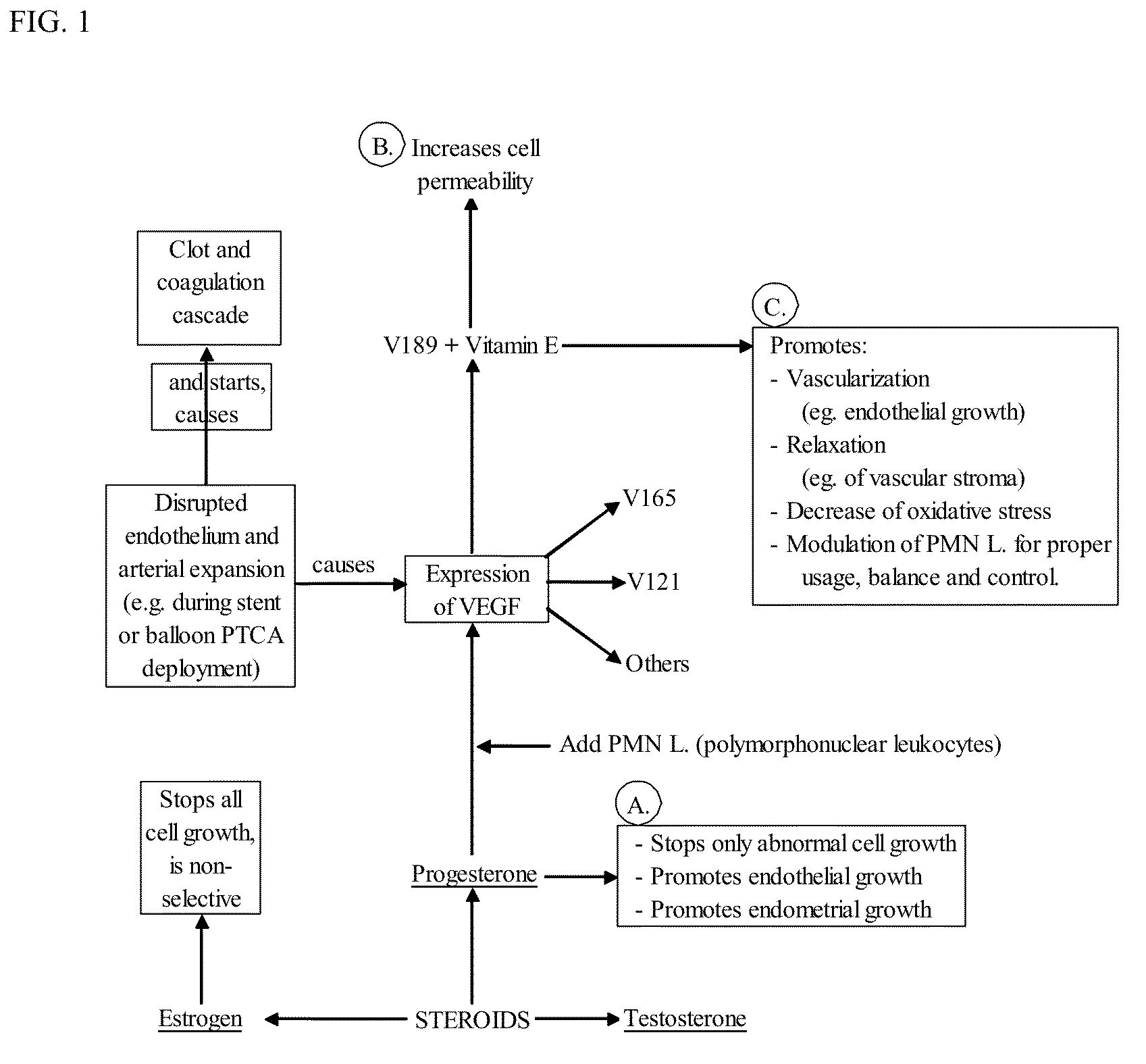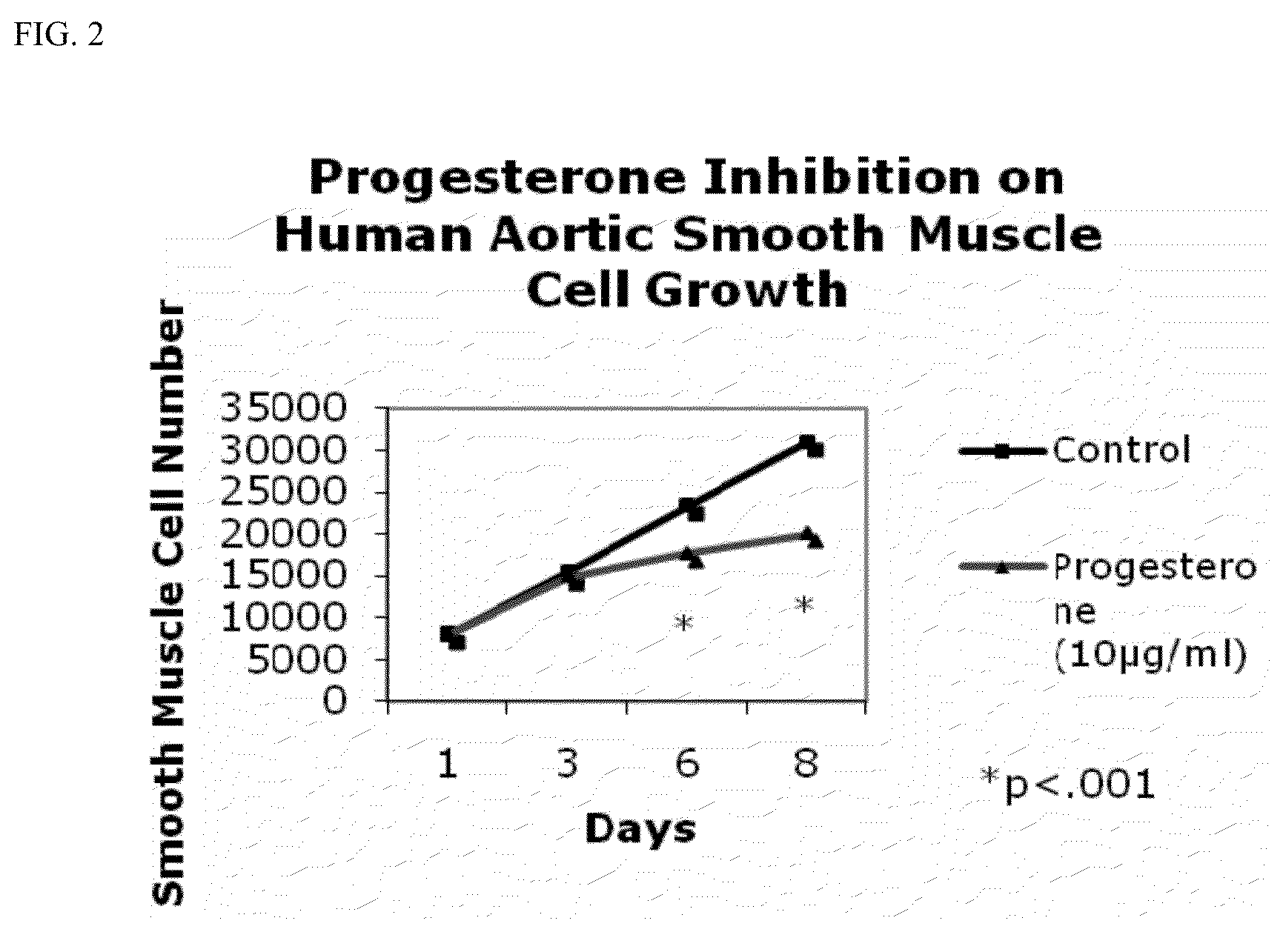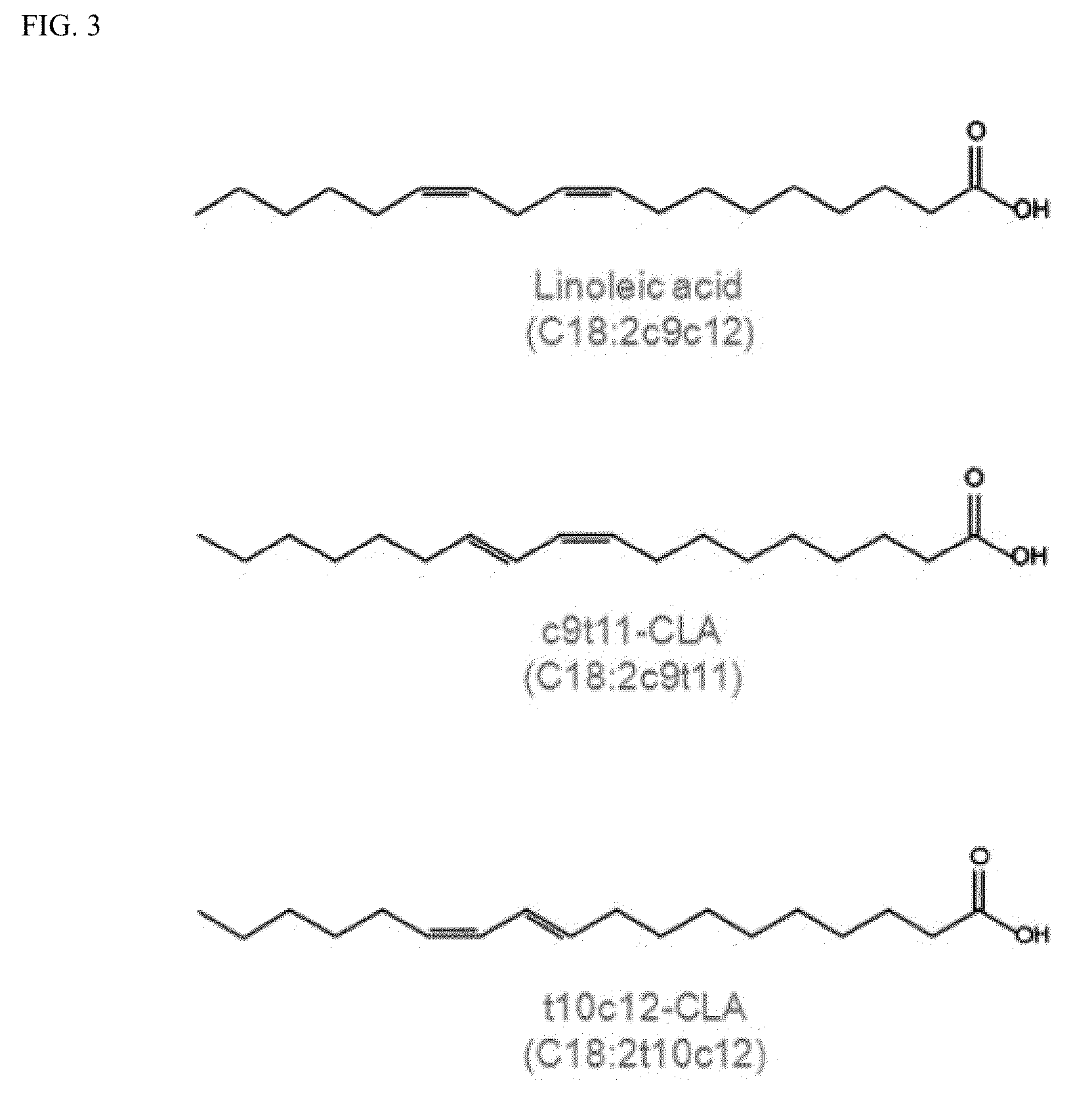Progesterone-containing compositions and devices
a technology of compositions and progesterone, applied in the direction of prosthesis, extracellular fluid disorder, catheter, etc., can solve the problems of scar tissue (cell proliferation) rapidly growing over or within the stent, re-occlusion of the artery, neointimal hyperplasia, etc., and achieve the effect of reducing or eliminating undesirable cellular growth
- Summary
- Abstract
- Description
- Claims
- Application Information
AI Technical Summary
Benefits of technology
Problems solved by technology
Method used
Image
Examples
example 1
Controlled Release Layer Coating
[0158]For primer base coating of a stent, 0.5 g copolymer of ethylene and vinyl alcohol is put into 10 ml N,N-dimethylacetamide. The mixture is dispersed at 80° C. and then sprayed onto stents. Thereafter the stents are dried in a vacuum oven for 2 hours at 120° C.
[0159]For barrier layer coating, Parylene is prepared by vacuum vapor deposition of 1,4-dimethylbenzene. First, 1-4-dimethylbenzene is heated to 950° C. to form dimethylbenzene dimer which cracks into monomer vapor at 680° C. later. Steel stents are then put in a deposition chamber at room temperature. Monomer vapor is introduced in the deposition chamber to form compact polymer coatings on the surface of stents. The molecular weight of polymer is estimated at 500,000.
[0160]For addition of antiplatelet-aggregation components, while the monomer steam is introduced into the substrate deposition chamber, the platelet antagonist grains (such as Cilostazol, Ticlid, Plavix and so on) are introduce...
example 2
Coating Composition
[0161]One part composition and about 2 to about 1000 parts solvent are put into a container and dispersed. Stents are coated uniformly with the dispersed solution and then cured in a vacuum oven for 0.5-72 hours at 20-200° C. This process can be repeated with the same drug, or a different drug, dispersed in solution. Thereafter the stents are coated with 1,4-dimethylbenzene through vacuum vapor deposition. The solvents utilized are able to disperse polymers, active components, and additives uniformly. The solvents should be stable, non-reactive with the polymers, active components, and additives. The solvents should not affect on the therapeutic effect of active components; and the solvents should be volatile and readily evaporate from the coating while the coating is curing. These solvents include water; alcohol and ketone such as glycerin, isopropanol acetone, cyclohexanone butanone, ester such as ethyl acetate, butyl acetate, alkane such as n-hexane chloroform ...
example 3
Preparation of a Multi-Layer Progesterone-Containing Coating on a Stent by a Dip-Coating Method
[0163]A coating solution is prepared by combining and agitating a polyurethane polymer (3% wt.), progesterone (0 to 20% wt.), and THF, until thoroughly mixed. Prior to applying the layer, the stent surface is prepared and cleaned by washing it with methanol and drying it in a vacuum drier for approximately 30 minutes.
[0164]For dipping, the dry and clean stent is fully immersed into the coating solution and dried at room temperature for approximately about 5 hours in a beaker saturated with THF. This dipping / drying process is repeated about 5 times. After the fifth repetition, the stent is dried at room temperature for about 1 hour in a vacuum drier.
[0165]For spraying, the coating solution is sprayed on the cleaned stent for approximately 10 minutes and dried at room temperature. The spraying / drying process is repeated 10 times, after which the stent is dried in a vacuum drier for approxima...
PUM
| Property | Measurement | Unit |
|---|---|---|
| concentrations | aaaaa | aaaaa |
| concentrations | aaaaa | aaaaa |
| concentrations | aaaaa | aaaaa |
Abstract
Description
Claims
Application Information
 Login to View More
Login to View More - R&D
- Intellectual Property
- Life Sciences
- Materials
- Tech Scout
- Unparalleled Data Quality
- Higher Quality Content
- 60% Fewer Hallucinations
Browse by: Latest US Patents, China's latest patents, Technical Efficacy Thesaurus, Application Domain, Technology Topic, Popular Technical Reports.
© 2025 PatSnap. All rights reserved.Legal|Privacy policy|Modern Slavery Act Transparency Statement|Sitemap|About US| Contact US: help@patsnap.com



